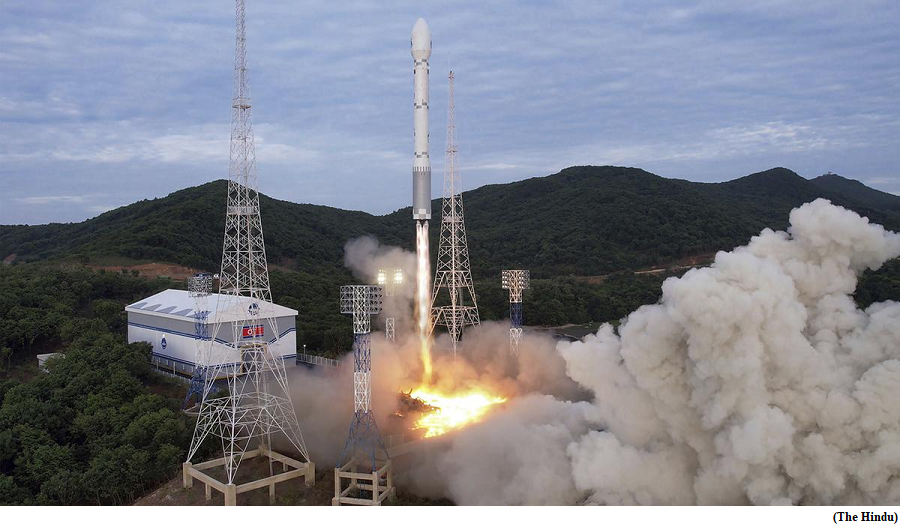Understanding the Kavach system (GS Paper 3, Science and Technology)

Why in news?
- The death of over 288 passengers in the ghastly train accident on June 2 at Bahanaga Bazaar railway station in the Balasore district of Odisha has brought into sharp focus the safety mechanisms needed to prevent such tragedies.
What is Kavach?
- The KAVACH is an indigenously developed by the Research Design and Standards Organisation (RDSO) in collaboration with the Indian industry. The trials were facilitated by the South Central Railway to achieve safety in train operations across Indian Railways.
- It is a state-of-the-art electronic system with Safety Integrity Level-4 (SIL-4) standards. It is meant to provide protection by preventing trains to pass the signal at Red (which marks danger) and avoid collision.
- It activates the train’s braking system automatically if the driver fails to control the train as per speed restrictions. In addition, it prevents the collision between two locomotives equipped with functional Kavach systems.
- The system also relays SoS messages during emergency situations. An added feature is the centralised live monitoring of train movements through the Network Monitor System.
- ‘Kavach’ is one of the cheapest, SIL-4 certified technologies where the probability of error is 1 in 10,000 years.
How does Kavach work on Railway Systems?
- The Traffic collision avoidance system (TCAS), with the help of equipment on board the locomotive and transmission towers at stations connected with Radio Frequency Identification (RFID) tags, helps in two-way communication between the station master and loco-pilot to convey any emergency message.
- The instrument panel inside the cabin helps the loco-pilot know about the signal in advance without visual sighting, and the permissible speeds to be maintained.
- If a red signal is jumped and two trains come face to face on the same line, the technology automatically takes over and applies sudden brakes. Additionally, the hooter activates by itself when approaching a level crossing which serves as a big boon to loco-pilots during fog conditions when visibility is low.
Where has Kavach been implemented?
- The Union Railway Minister inspected the trial of the Kavach working system between Gullaguda-Chitgidda Railway stations on Lingampalli-Vikarabad section in the Secunderabad Division of South Central Railway last March.
- The South Central Railway (SCR) Zone is a pioneer in the implementation of the KAVACH – (TACS). The Kavach system has been deployed over 1,465 kms in the SCR limits in 77 locomotives and 135 stations till March this year.
- Additionally, the Secunderabad-based Indian Railways Institute of Signal Engineering & Telecommunications (IRISET) hosts the ‘Centre of Excellence’ for Kavach.
- IRISET has been mandated by the Railway Board to train the in service railway staff on Kavach. The Institute’s Kavach lab carries out round the year training programmes.
What is the Kavach deployment strategy?
- Kavach implementation is being taken up in a focused manner by the Railway Board. The first priority are the High Density Routes and the New Delhi-Mumbai and New Delhi-Howrah Sections, as they have higher chances of accidents because the trains run closer to each other.
- The second priority lines are the Highly Used Networks, the third ones are other Passenger High Density Routes and the final priority is of course to cover all other routes.
- The RDSO has approved three firms; Medha Servo Drives, HBL and Kernex for providing Kavach equipment with two more being in the pipeline.
- Glitches about vulnerability of a vehicle crossing a closed level crossing, stray cattle or boulders on track, radio communication issues in tunnels, ghat sections, have been tackled.
Why does North Korea want spy satellites?
(GS Paper 3, Science and Technology)
Why in news?
- Recently, a North Korean military reconnaissance satellite Malligyong-1 was launched through a new type of rocket named Chollima-1. The satellite is said to have flown for about 10 minutes before crashing into the Yellow Sea.
- The launch was reported failure as the instability in the rocket’s engine and fuel system. The launch, however, prompted evacuation warnings and emergency alerts in parts of South Korea and Japan. The U.S., Japan and South Korea expressed ‘strong condemnation’ to the launch.

What is N. Korea’s space programme?
- North Korea in the past decade has had an active space program that is closely related to its missile program. Satellite launch vehicles use the same core technology as long-range missiles that deliver warheads capable of destroying intercontinental targets, (the Intercontinental Ballistic Missiles or ICBMs).
- Starting from 1998, North Korea successfully orbited its first satellite in 2012 after three failed attempts. The launch vehicle used was Unha-3, a likely variant of Taepodong-2 ICBM. The Unha-type launch vehicle was also used in the 2016 launch of Pyongyang’s Earth Observation satellite.
- The recent flight was the sixth satellite launch by Pyongyang. It was done through the Chollima-1 which is a new space launcher known to have an engine that is similar to North Korea’s dual-nozzle liquid-fuel machine used in Hwasong-15 ICBM.
- Additionally, in April, North Korea announced that it had completed the construction of its first spy satellite.
Why does it want assets in space?
- The North Korean spy satellites are expected to play a crucial role in providing advanced surveillance technology that covers a large portion of the region, to improve the ability to strike targets during conflict.
- Moreover, North Korea’s space programme is a response to other strategic developments in the region.
- Earlier, the U.S. announced that it would be activating U.S. Space Forces Korea. This system would provide South Korea with advanced capabilities of missile warning and satellite communications throughout the Korean peninsula and its proximate areas.
- In May, South Korea successfully launched its Nuri rocket that is designed to assist Seoul’s efforts to develop a space-based surveillance system. These developments nudged Pyongyang to hasten the launch of Malligyong-1.
What does this mean for East Asia?
- The security anxiety in East Asia in response to the North Korean satellite launch reveals a sense of urgency among the regional powers. North Korea no longer needs to develop its long-range missile technology under the guise of satellites since its test-firing in 2017.
- Pyongyang seems unafraid to reveal its technological intentions and strengthen its security apparatus in the region. While the launch is a breach of the UN Security Council resolutions, it is unlikely to attract additional economic sanctions. This displays the weak effectiveness of sanctions imposed on North Korea.
- Additionally, while the international responses to the launch were largely focused on the missile technology, the possibility of a successful set of four to five military satellites by Pyongyang in-orbit would provide North Korea’s military the surveillance capacity that covers the region, strengthening its missile-launch capabilities.
How researchers used AI to find an antibiotic against a superbug
(GS Paper 3, Science and Technology)
Why in news?
- In a major breakthrough for the use of Artificial Intelligence (AI) in the field of medicine, scientists from the United States and Canada have found a new antibiotic to kill superbugs using AI.
- Superbugs are bacteria that are resistant to several types of antibiotics.
- Each year these drug-resistant bacteria infect more than 2 million people in the US and kill at least 23,000, according to the US Centers for Disease Control and Prevention (CDC).

What is Acinetobacter baumannii?
- In 2017, the bacterium was identified by the World Health Organization (WHO) as one of the world’s most dangerous antibiotic-resistant bacteria.
- Notoriously difficult to eradicate, A. baumannii can cause pneumonia, meningitis and infect wounds, all of which can lead to death.
- The WHO’s list of superbugs highlighted bacteria that are having built-in abilities to find new ways to resist treatment and can pass along genetic material that allows other bacteria to become drug-resistant as well.
How do bacteria become resistant to drugs?
- Antibiotics are medicines used to prevent and treat bacterial infections. Antibiotic resistance occurs when bacteria change in response to the use of these medicines, says the WHO. This ultimately threatens the ability of medicines to treat common infectious diseases.
- The WHO lists infections such as pneumonia, tuberculosis, and foodborne diseases as becoming harder to treat with existing medication due to increasing anti-bacterial resistance.
How did researchers use AI in this case?
- Narrowing down the right antibacterial chemicals against bacteria can be a long, difficult process. This is where algorithms come in because the concept of AI is based on the process of machines being given large amounts of data and training themselves on identifying patterns and solutions based on them.
- According to MIT, the researchers first exposed A. baumannii grown in a lab dish to about 7,500 different chemical compounds, to see which ones could help pause the growth of the bacterium.
- Then they fed the structure of each molecule into the machine-learning model. They also told the model whether each structure could prevent bacterial growth or not. This allowed the algorithm to learn chemical features associated with growth inhibition.
Outcome:
- Once the model was trained, the researchers used it to analyse a set of 6,680 compounds. This analysis took less than two hours and yielded a few hundred results. Of these, the researchers chose 240 to test experimentally in the lab, focusing on compounds with structures that were different from those of existing antibiotics.
- Those tests yielded nine antibiotics, including one that was very potent and effective at killing A. baumannii. This has been named abaucin.




